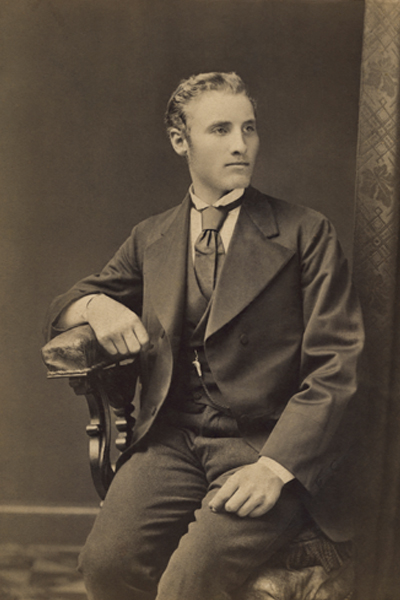Johan Adrian Jacobsen
Johan Adrian Jacobsen (1853-1947) was an early collector of Native arts from the Northwest Coast at the end of the nineteenth century. Born into a Norwegian sailing family in 1853, Jacobsen left for Hamburg as a young man and became an avid traveler. He worked at sea before joining Carl Hagenbeck’s ventures as a dealer of exotic animals and conductor of ethnic exhibitions. In 1880, Jacobsen travelled to Labrador to assemble a group of Inuit and their material culture for Hagenbeck’s ethnic shows, which toured around Germany, France, and the Netherlands. He soon became known as a prominent figure in the field of ethnology following the collection and cataloging of objects during his 1881-1883 expedition to the Northwest Coast and Arctic.
The expedition was sponsored by Adolf Bastian for the purpose of amassing material for the newly built Royal Ethnographical Museum in Berlin, of which Bastian was the director. Jacobsen’s quest was to collect both ceremonial and quotidian objects from multiple regions along the North Pacific Coast. The resulting assemblage of masks, Coppers, rattles, garments, tools, and elements of bodily adornment now comprises the bulk of the Berlin museum’s Northwest Coast collection. As it was acquired before the Canadian government outlawed the potlatch in 1884, and before Franz Boas began his own illustrious career, this collection has been a valuable resource for Indigenous communities and anthropologists.
Jacobsen was not a trained ethnologist and never received a formal education. As a result, his record keeping, catalog entries on his own collection, and travel notes lack ethnographic rigor. Jacobsen never mastered local terminology relating to the objects he gathered; in most cases he categorized things broadly according to language groups rather than noting specific villages or families among whom he made purchases. Many pieces from this expedition appear in Boas’s landmark 1897 text, and both Boas and George Hunt spent their respective lifetimes working on and drawing from Jacobsen’s important collection. Due to the collection’s poor documentation, Boas, Hunt, and contemporary scholars did and do struggle with reconstructing accurate cultural biographies of these objects.
By Avery Schroeder
Objects Collected by Jacobsen
SOURCES:
Ames, Eric. Carl Hagenbeck’s Empire of Entertainments. Seattle: University of Washington Press, 2008.
Bolz, Peter and Hans-Ulrich Sanner. Native American Art: The Collections of the Ethnological Museum Berlin. Seattle: University of Washington Press, 1999.
Cole, Douglas. Captured Heritage: The Scramble for Northwest Coast Artifacts. Seattle: University of Washington Press, 1985.
Fienup-Riordan, Ann. Yup’ik Elders at the Ethnologisches Museum Berlin: Fieldwork Turned on Its Head. Seattle: University of Washington Press in association with Calista Elders Council, Bethel, Alaska, 2005.
Glass, Aaron. “Indigenous Ontologies, Digital Futures: Plural Provenances and the Kwakwaka’wakw Collection in Berlin and Beyond.” In Museum as Process: Translating Local and Global Knowledges, edited by Raymond Silverman, 19-44. London: Routledge, 2015.
———. “Northwest Coast Ceremonialism: The Works of J.A. Jacobsen (1853-1947).” European Journal of American Studies 5 (2): Article 3, 1–11, 2010.
Glass, Aaron and Rainer Hatoum. “From British Columbia to Berlin and Back Again: Jacobsen’s Kwakwaka’wakw Collection Across Three Centuries.” Ms. in development, 2018.
Sabathy-Judd, Linda. Review of The Voyage with the Labrador Eskimos 1880-1881 by Johan Adrian Jacobsen. Journal of Moravian History 16 (2): 174–76, 2016.



